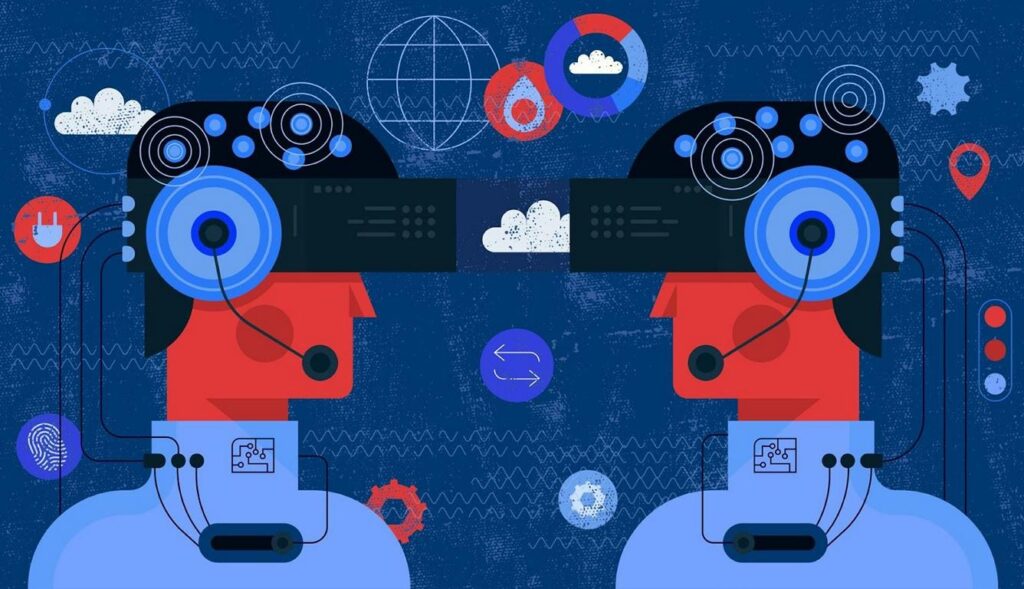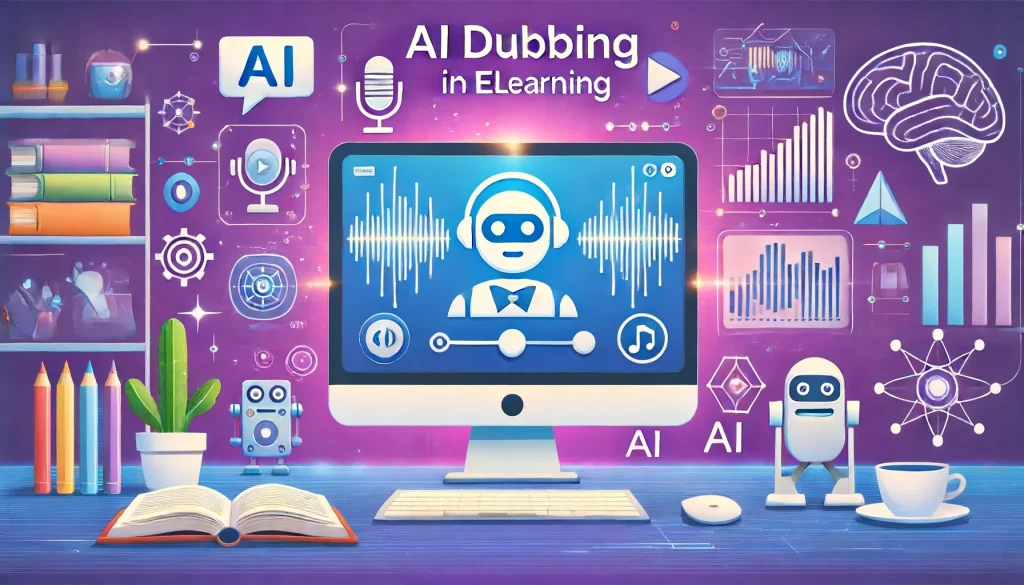Living in a digital era where artificial intelligence (AI) has majorly disrupted and revolutionized every industry, it’s imperative to consider the influence of AI in promoting cross-cultural communication and ensuring widespread accessibility of content. With the growing influence of digital media, according to the illustrious market research organization-Kaiser Associates, the international entertainment and media market is anticipated to surge forward, predicted to touch the colossal $2.2 trillion mark by 2021.

Within such a massive and ever-growing market, AI can be a powerful tool through intelligent features like dubbing and subtitling. It can not only make content universally accessible but also keep it engaging and fascinating for all users. Discussed herein are the reasons why prominent multinational enterprises need to think about incorporating AI and automation in their operations. AI-driven dubbing and subtitles can be the pathway to remain competitive and inclusive in the buzzing global marketplace.
Content Index:
- The Paradigm Shift to AI in the Media World
- Exploring international markets with AI Dubbing and Subtitling
- Cost-effectiveness, Efficiency, and Precision: The Triple Advantages of AI
- Universal Communication: Eliminating Language Barriers
- Success Stories: Triumph of AI in Dubbing and Subtitling
- The Future scenario with AI and its influence
The Paradigm Shift to AI in the Media World

Data gathered by well-known private equity, venture capital, and M&A database provider- CrunchBase, suggests that investments in AI-driven start-ups have witnessed a massive hike of nearly 60% since 2010. This data is a clear indication of the rapid adoption, acceptance, and growing dependency on AI and automation across a variety of industries. The media and entertainment sector, in particular, has been an ideal recipient that has benefited from the use of AI technologies. This is primarily because the media industry is primarily about delivering captivating content that educates, entertains, and informs the global audience. Thus, the integration of AI dubbing and subtitles can elevate user experiences by transforming the way audiences across the world perceive and consume content.
Exploring International Markets with AI Dubbing and Subtitling

In the high-speed broadband era, content creators need to communicate with audiences spread across geographical landscapes. This necessitates the need for universal languages or atleast, universal means of communication. The New York Times in one of their studies reported that over 60% of audiences streaming content on Netflix hail from international markets. Catering to such a diverse audience base requires AI-based solutions that can localize content, making it relatable to these international viewers. Thus, AI-supported dubbing and subtitles offer a cost-efficient, scalable and practical way to resonate with audiences from differing linguistic and cultural backgrounds.
Cost-effectiveness, Efficiency, and Precision: The Triple Advantages of AI

Undeniably, AI has the potential to completely metamorphose the way we perceive and process content through dubbing and subtitles. Conventional methods of dubbing and subtitling are often laborious, expensive, and timed, with plenty of scope for human error. However, when it comes to AI, there lies the possibility of automating these processes, thereby reducing costs, curtailing turn-around time, and improving the overall precision and accuracy. A study published by Juniper Research predicts that by 2022, businesses worldwide will save more than $8 billion annually through the usage of AI-supporting chatbots, underlining the cost-saving potential of AI.
Incorporating AI-based dubbing and subtitling into large-scale companies can offer a wide range of benefits that enhance customer engagement, operational efficiency, and global reach. Here are some compelling reasons why large-scale companies should consider adopting AI dubbing and subtitling:
1. Cost Efficiency
Traditional dubbing and subtitling processes can be expensive and time-consuming, involving hiring voice actors, translators, and technicians. AI-powered solutions can significantly reduce these costs by automating parts of the process, thereby providing substantial cost savings.
2. Faster Turnaround Time

AI-powered localization tools can work around the clock, enabling companies to produce localized content at a faster pace. This rapid turnaround time is especially crucial in today’s fast-paced business environment, where timely content delivery is essential for staying competitive.
3. Global Accessibility
AI allows companies to quickly and efficiently adapt their content for various languages and regions. This global accessibility helps companies expand their reach and engage with diverse audiences, ultimately leading to better customer connections and increased market share.
4. Consistent Quality
With features like NeoDub, AI tools maintain a consistent level of quality across all dubbed or subtitled versions of content. This ensures that the messaging and branding remain consistent across different languages, promoting a unified and professional image.
5. Scalability
Large-scale companies often have vast amounts of content that need to be localized. AI-powered solutions can easily scale to handle high volumes of content without compromising quality, making them suitable for the content demands of large enterprises.
6. Personalization

AI algorithms can analyze viewer preferences and behavior to generate personalized content recommendations, which can enhance customer engagement and satisfaction. Personalized dubbing and subtitling can create a more immersive and relatable viewing experience for each individual viewer.
7. Accessibility and Inclusion
AI-based subtitling and dubbing can improve accessibility for individuals with hearing impairments or language barriers. By providing content in multiple languages and formats, companies can demonstrate a commitment to inclusivity and cater to a broader audience.
8. Data-Driven Insights
AI-driven solutions can provide valuable data and insights about viewer engagement and preferences. These insights can inform content creation strategies, enabling companies to refine their approach and create content that resonates better with their target audiences.
9. Competitive Advantage: Early adoption of AI dubbing and subtitling technology can give large-scale companies a competitive edge in their industry. Companies that embrace innovative technologies often stand out as forward-thinking and customer-centric organizations.

10. Adaptation to New Platforms: As new content distribution platforms emerge, such as streaming services and social media, the demand for localized content continues to grow. AI dubbing and subtitling can help companies quickly adapt their content for these platforms, allowing them to stay relevant and reach audiences where they are.
Incorporating AI dubbing and subtitling may not replace human involvement entirely, as creative aspects and cultural nuances still require a human touch. However, integrating AI-driven solutions can significantly streamline the localization process, reduce costs, and enable large-scale companies to effectively communicate and engage with a global audience.
Universal Communication: Eliminating Language Barriers

AI-driven subtitling and dubbing can serve proactive roles to eliminate language barriers while also making content universally accessible. The United Nations Educational, Scientific and Cultural Organization (UNESCO) advocates that multilingualism aids a culturally inclusive Internet. In line with this, AI-driven dubbing and subtitle technology can encourage cultural diversity and inclusive communication. This distinctive feature serves as a value addition for companies aspiring to create global products and services, thus empowering them to communicate with consumers in their native languages.
Success Stories: Triumph of AI in Dubbing and Subtitling
ZOO Digital, a globally recognized provider of cloud-based dubbing, subtitling, localization, and distribution services, is a notable success story. The company reported an impressive 50% annual growth in 2019, attributing most of its achievement to its advanced AI technology, which helped it cut cost, ensure high-quality results and reduced turn-around time, making global content delivery more quick and effective.
The Future Scenario with AI and its Influence

AI stands stalwartly at the vanguard of future technological advancements. Its potential to revolutionize industries is immense and the media sector has just begun to explore the prowess of AI in dubbing and subtitling.
It’s almost non-negotiable for large multinational enterprises to adapt to this evolving technology. Incorporating AI within organizational operations is expected to not only boost competitiveness but to ensure seamless communication with their global audience in the most efficient, cost-effective, and inclusive way. AI is certainly paving the path for promising prospects within the global media industry.
Ready to take it to the next step? Reach out to us and let’s see how we can help you build global messages.


